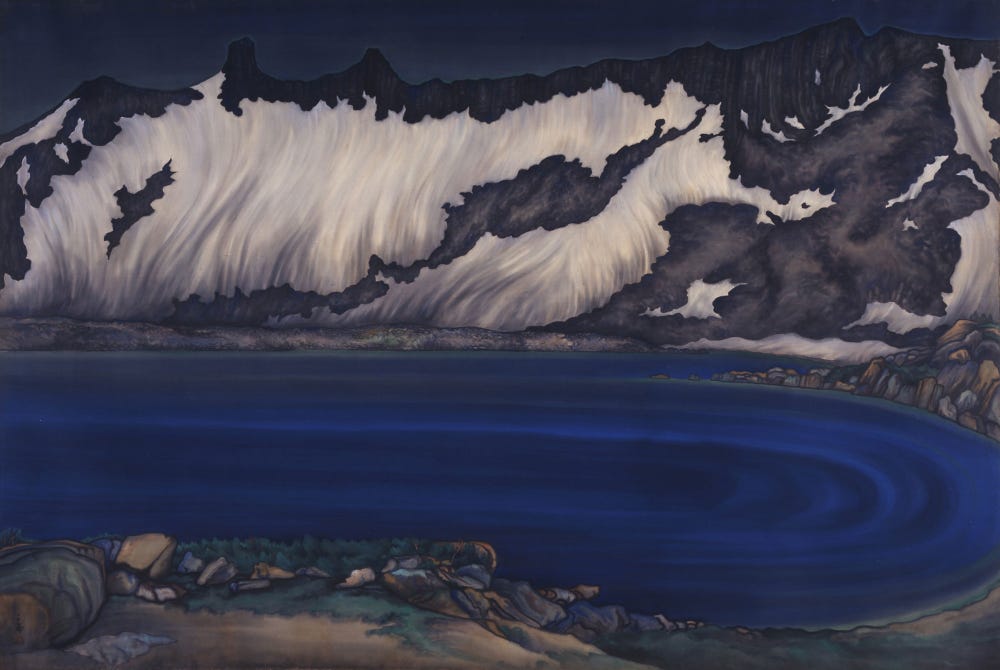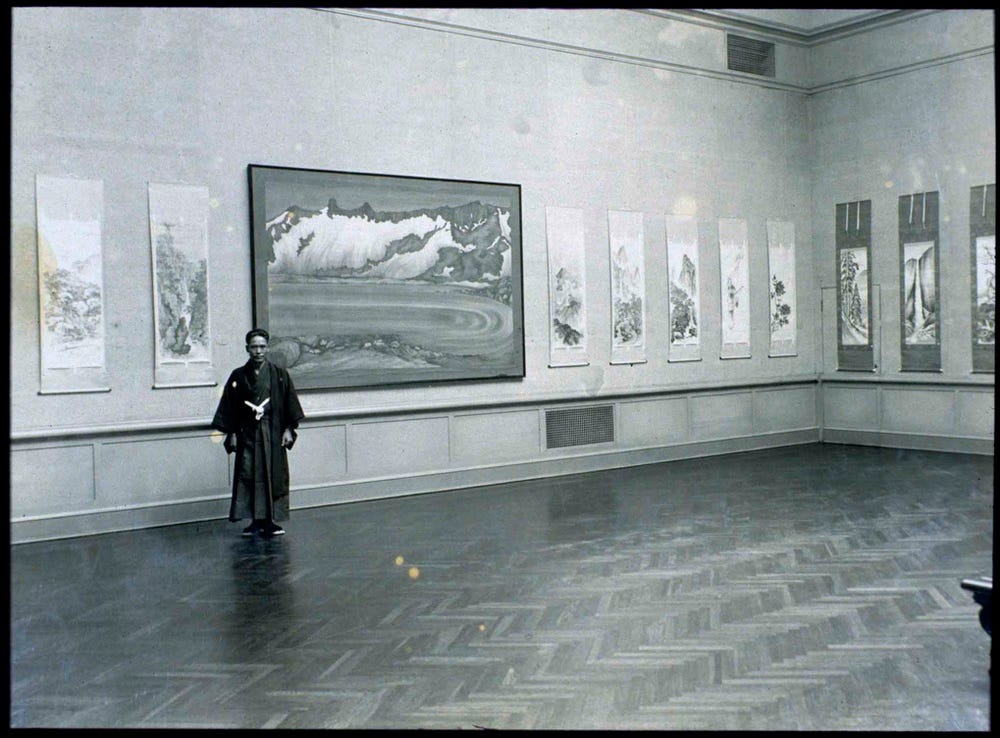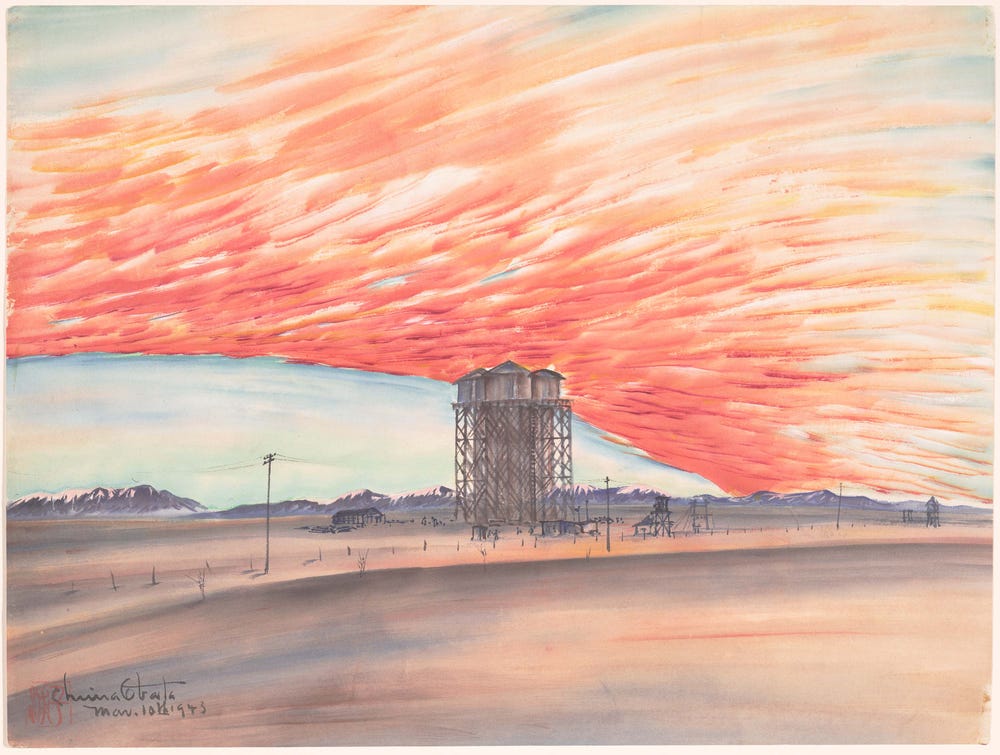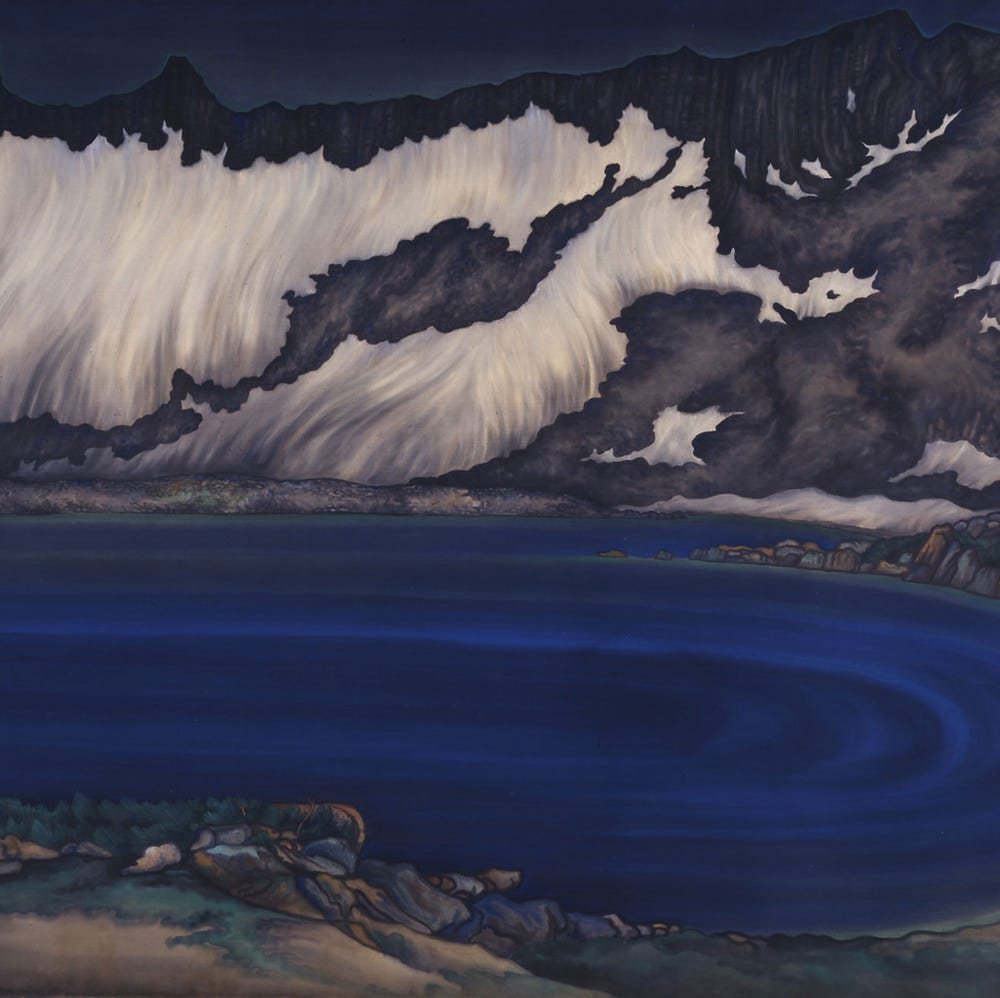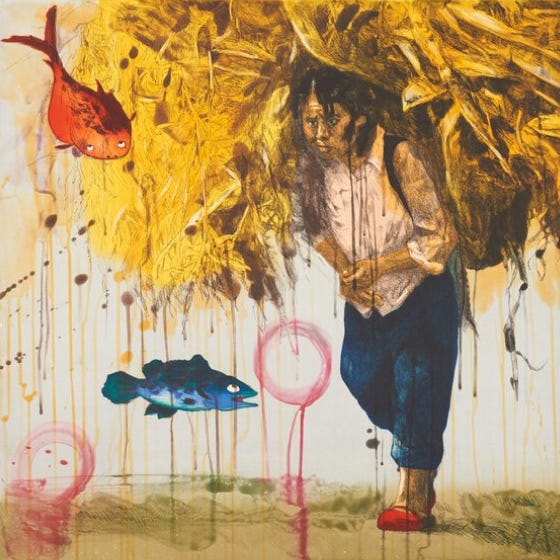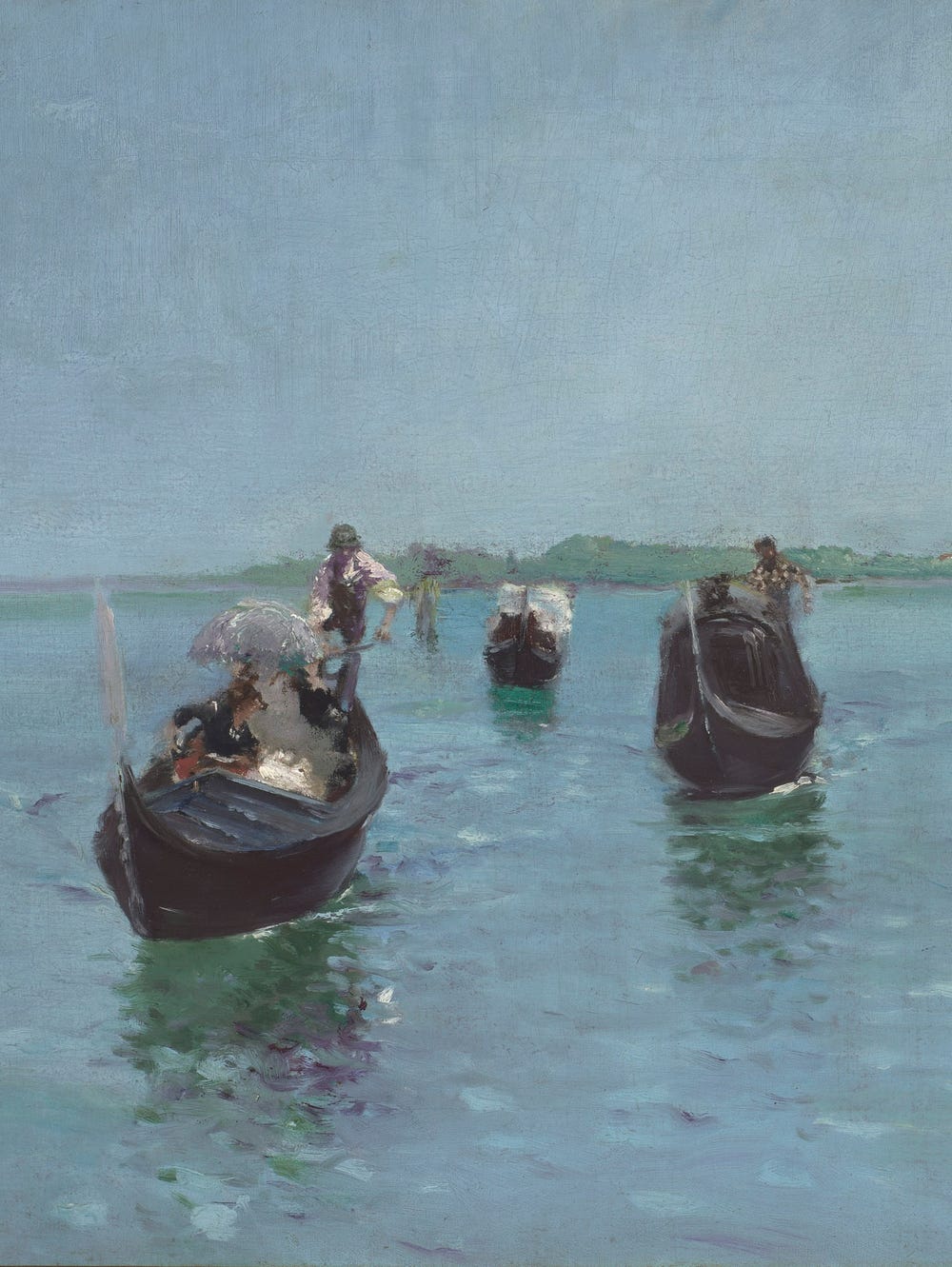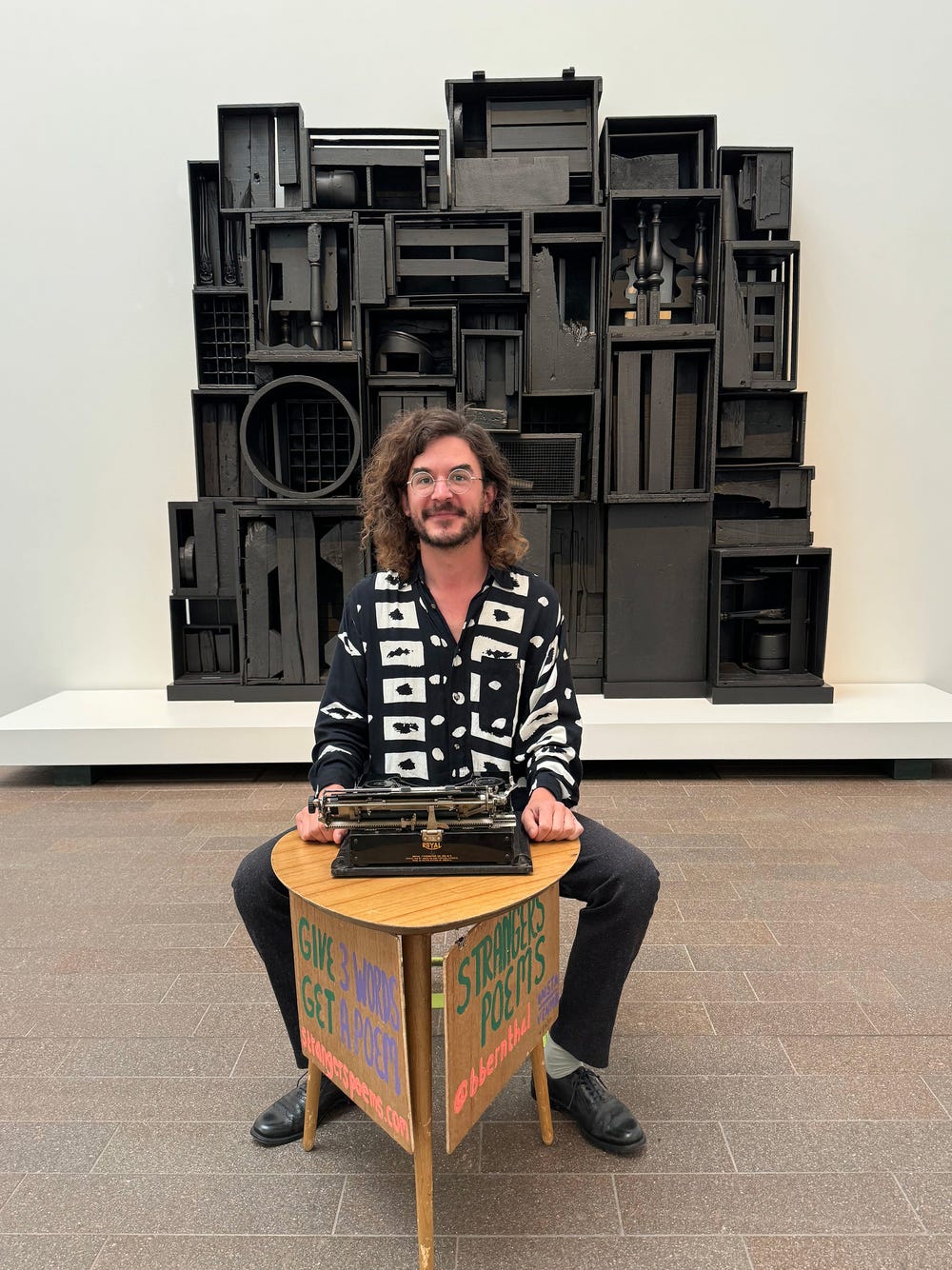Chiura Obata and The Restorative Powers of “Great Nature”
By Timothy Anglin Burgard
March 26, 2020
Chiura Obata (1885–1975) was one of the San Francisco Bay Area’s most influential, respected, and beloved artists. Throughout his life, and particularly in times of great adversity, he found inspiration in what he termed “Great Nature” (Dai Shizen).
After emigrating from Japan to San Francisco in 1903, Obata became the Bay Area’s most prominent practitioner of the modern nihonga (Japanese Painting) movement, which sought to reconcile traditional Japanese and contemporary European schools of art. Accompanied by his wife Haruko Kohashi (1892–1989), who taught ikebana (flower arrangement), Obata gave public lectures and demonstrations that introduced Bay Area audiences to Japanese aesthetics and the art of sumi-e (brush and ink painting).
Chiura Obata at his exhibition of paintings by Rokuichi and Chiura Obata at the California Palace of Legion of Honor, 1931. Courtesy of the Obata Family
As a professor of art (1932–1942/1945–1954) for the University of California at Berkeley, Obata taught thousands of students about Asian culture and Buddhist philosophies of respect for nature, selflessness, and pacifism. The East West Art Society, co-founded by Obata in 1921, promoted his belief that art could provide the common ground necessary to transcend the barriers of nationalism and racism.
Chiura Obata, Sunset, Watertower, March 10, 1943, 1943. Ink, color, and mica on paper, 15 1/4 x 20 1/2 in. (38.7 x 52.1 cm). Fine Arts Museums of San Francisco, Museum purchase, Gift of the Achenbach Graphic Arts Council, 2001.28.1
Obata remained faithful to this view even during World War II, when he and 110,000 other Japanese Americans were imprisoned in internment camps. In Topaz, Utah, Obata founded an art school and created works in which “Great Nature” transcended the physically and psychologically trying conditions of camp life. After the War, he and his wife conducted cultural tours of Japan, hoping to promote cross-cultural understanding by introducing Americans to Japanese art, architecture, and landscape gardening.
For Obata, “Great Nature” provided important philosophical lessons regarding permanence and impermanence, and also served as a source of spiritual enlightenment. Although he never practiced any organized religion, Obata observed, “when I enter into the bosom of Great Nature I believe in the blessing of nature as a kind of God to me.”
Chiura Obata, Lake Basin in the High Sierra, ca. 1930. Ink and color on silk mounted on paper, 69 1/2 x 102 1/2 in. (176.5 x 260.4 cm). Fine Arts Museums of San Francisco, Museum purchase, Dr. Leland A. and Gladys K. Barber Fund, 2000.71.1
This philosophy is epitomized by Obata’s nearly six-by-nine-foot painting on silk, Lake Basin in the High Sierra (ca. 1930), which depicts a pristine mountain lake. The artist recalled:
For just two months in the year the nameless lake nestling at the foot of Johnson Peak in the High Sierra comes to life from its wintery slumber. Rocks and five needle pines along the shore cling to each other tightly. Countless streams run down the frozen mountainside, lending a sublime melody. Man’s very soul and body seem to melt away into the singular silence and tranquility of the surrounding air.
Lake Basin in the High Sierra is one of the largest of Obata’s landscapes, yet it retains an intimate sense of enclosure. The deep blue heart of the lake, painted with sparkling lapis lazuli pigment, reflects his Zen-influenced philosophy of art:
In training and producing art, our mind must be as peaceful and tranquil as the surface of a calm, undisturbed lake. Let not a shadow be cast on it with the slightest thought of self-conceit or Egotism, but philosophically undertake the task with perfect composure and frankness. Only thus can a genuine art, overflowing in deep praise and abounding in inspiration, be produced.
Lake Basin in the High Sierra offers a direct encounter and communion with “Great Nature,” a vision that accepts the insignificance of human affairs in relation to the timeless forces of nature. The painting may be seen to embody Obata’s guiding principles of wa, kei, sei, and jyaku (harmony, respect, purity, and serenity), which are associated with the traditional Japanese tea ceremony.
Obata’s carefully cultivated vision of “Great Nature” as a common ground shared by all cultures, and a precious physical and spiritual resource deserving of protection and reverence, seems ever more prescient with the passage of time. Lake Basin in the High Sierra beautifully captures the artist’s belief in the restorative powers of nature, which can provide sanctuary, sustenance, and solace in troubled times.
Text by Timothy Anglin Burgard, Distinguished Senior Curator and Curator-in-Charge of American Art.
Meditate further: Our curator discusses Obata in this video.
